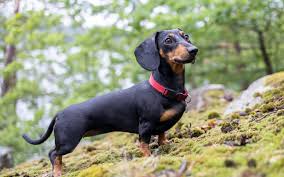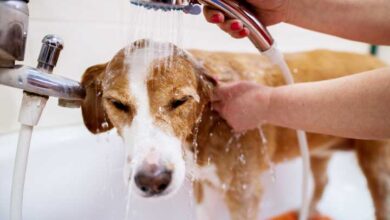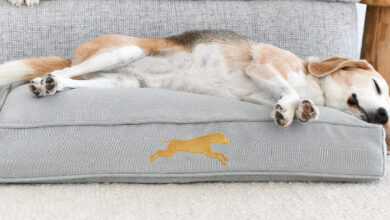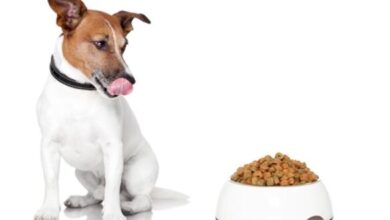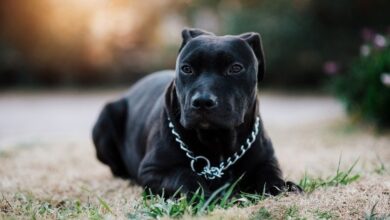Everything You Need to Know about Man’s Best Friend: Dog Breeds
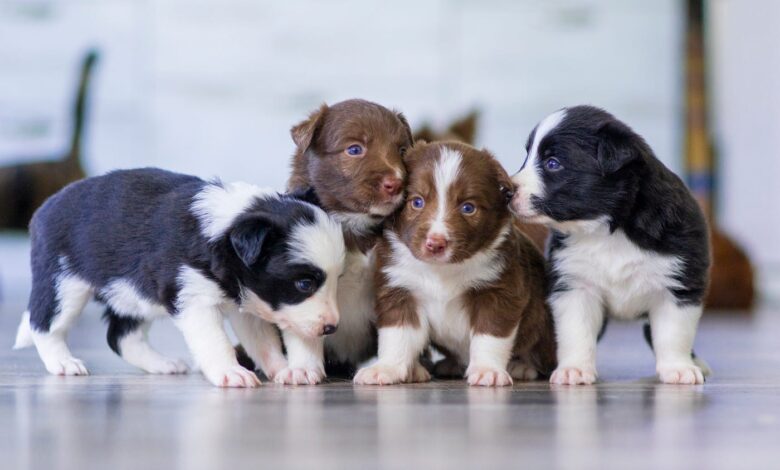
Answering Common Questions About Dog Breeds
Dog lovers frequently have questions about what defines breeds and how they came to be. Let’s explore some commonly asked queries in more detail:
Are there truly over 400 recognized dog breeds globally?
Yes, it is estimated that major international kennel clubs collectively recognize over 400 distinct dog breeds worldwide. However, the populations of some rare heritage breeds may number less than 100 breeding individuals, placing their continued survival in jeopardy if preservation efforts are not taken. The most popular breeds found in homes number closer to 200 varieties that have withstood the test of time.
How are new dog breeds developed?
Typically, new breeds are created through long-term, selective breeding programs undertaken by specialist breeders. Over multiple generations, desirable physical and behavioral traits are emphasized through planned matings until traits reliably produce true-breeding offspring consistently fitting an established standard. Occasionally, natural breed mutations may also emerge and become formally recognized once their unique characteristics are preserved. The process can span decades to yield a breed distinct from its predecessors.
What defines a breed versus just a mixed dog?
To achieve breed status recognition, a variety must exhibit consistently reproducible traits that reliably produce true-breeding offspring when selectively bred with one another. Mixed-breed dogs, commonly called mutts, do not descend from standardized lineages and therefore lack recognizable breed traits passed from generation to generation. Their ancestry traces back to multiple breeds in unpredictable combinations.
Are dogs bred for certain roles or just appearances?
When examining a breed’s origins, one discovers most were created by early farmers and workers to fulfill useful tasks, not merely for form alone. Herders, hunters, ratters, and more – each breed evolved talents befitting important regional roles. Traits like energy level, intelligence, and personality became linked to performance abilities over time through purposeful matings. Although modern purebreds emphasize consistent looks per standards, their ancestry lies in indispensable working functions.
Dogs have been humanity’s loyal companions for thousands of years, and with over 400 recognized breeds globally, there is a perfect dog for every lifestyle. Whether you want a playful family dog, a hearty working dog, or a small lapdog, learning about dog breeds is the first step towards welcoming a furry friend into your home.
10 Most Popular Dog Breeds in Australia
When it comes to popularity, these are the top 10 breeds most commonly found in Australian homes:
1. Labrador Retriever
Labs are the undeniable #1 in Australia, as their friendly, outgoing personalities make them perfect for families with children. They are intelligent and energetic and thrive on human interaction and play. Their soft coats come in three colors: black, yellow, and chocolate. With regular exercise, Labs stay happy and healthy.
2. French Bulldog
Charming and compact, the French Bulldog has skyrocketed in popularity in recent years. Their bat-like ears and pushy noses give them an adorable countenance. However, their short snouts require warm temperatures as they are prone to overheating. Frenchies can be aloof with strangers but devoted to their owners. Daily walks are sufficient exercise for most.
3. Staffy (Staffordshire Bull Terrier)
Affectionately known as Staffies, they compete with French Bulldogs as the number one companion breed. While small in size, Staffies have large, loving personalities. With a history as a nursing dog, Staffies are gentle and loyal. Consistent training is important to curb any playful exuberance. Like all dogs, early socialization helps Staffies be friendly towards other dogs and people.
4. German Shepherd
German Shepherds are working dogs at heart, making them a versatile breed for active families. Highly intelligent, they thrive on mental stimulation and jobs to do. Shepherds need firm, patient handling from a young age. With proper training, they become devoted, focused guardians that love new experiences. Daily walks and play are musts for this breed.
5. Cavalier King Charles Spaniel
Gentle, placid, and devoted, Cavaliers make wonderful family dogs for owners of any age or lifestyle. Their silky coats are low-shedding and come in ruby, tricolor, and Blenheim patterns. Smaller in size, Cavaliers enjoy naps on laps and gentle play throughout the day. Regular brushing helps prevent matting in their long fur.
6. Border Collie
With their high energy and herding instincts, Border Collies thrive most with dedicated owners who have time for advanced training and exercise. They are highly trainable and intelligent but lack an off-switch. Without sufficient mental and physical activities, Borders can become bored, anxious, and destructive. Multiple walks per day and agility activities help satisfy their working drive.
7. Boxer
With their blocky bodies, expressive faces, and playful personalities, Boxers exude puppyish charm. Devoted and protective of children, Boxers are gentle giants. Their short coats are maintenance-free. While energetic, Boxers also enjoy downtime mingling with their beloved people. Early socialization helps ease their natural guarding instincts around strangers.
8. Pug
With their flat-faced, wrinkly mugs, Pugs look eternally playful. In reality, they can be haughty, stubborn, and prone to health issues. Smaller homes suit their quiet lifestyles best. Pugs tend to bond tightly to one person and may be moody with strangers or children. Daily brushing minimizes eye and skin infections common to the breed. Gentle exercise, like short walks, is sufficient.
9. English Bulldog
Distinguished by their prominent underbites, smooshed faces, and lopsided grins, Bulldogs are gentle giants. Their short muzzles give them signature snorts and grunts. Due to loose skin and oversized heads, Bulldogs can overheat in warmer climates. Low-energy, they enjoy naps interspersed with periods of play. Gentle grooming helps remove dirt from skin folds.
10. Maltese
An ultra-small companion breed, Maltese are gentle, outgoing, and devoted. Their lustrous white coats, small size, and outgoing nature make them a popular choice for seniors and smaller homes. Maltese shed minimally but require regular brushing to avoid mats and tangles in their long fur. Gentle play and short walks suit their petite frames.
Dog Species: Domestic Dog vs Wild Dogs
With over 400 breeds in existence today, modern dogs are highly diverse in size, shape, and behavior. However, all domestic dogs share ancestors from just two wild species – the gray wolf and the African wild dog. Understanding the differences between domestic dogs and their wild relatives provides insight into breed traits and care requirements.
Domestic dogs (Canis lupus familiaris) were selectively bred by humans over thousands of years from gray wolves (Canis lupus), creating distinctive breeds. While still a member of the canid family, domestic dogs have undergone significant changes that make them differ from wolves in both appearance and temperament.
Compared to wolves:
- Dogs are smaller in size and have a wider variety of shapes/forms due to selective breeding
- They lack the strong pack hierarchies and territorial behaviors of wolves
- Their facial structures and brains are adapted to human communication cues
- Dogs readily seek human companionship and interaction
Some primitive dog breeds, like dingoes, more closely resemble their wild relatives in size and behaviors, retaining stronger instincts than domestic breeds. However, even dingoes live freely among humans in Australia and are less aggressive than wolves.
The African wild dog (Lycaon pictus) is a true wild canid that never underwent domestication. They strictly live in complex packs with inflexible hierarchies and actively hunt prey using cooperative strategies. Compared to domestic dogs, African wild dogs show little tolerance for human interaction.
Understanding these key differences in our canine relatives is a helpful context for recognizing and meeting the varying needs of domestic dog breeds today descended from ancient wolf packs in both body and spirit. With the right care matched to their natural traits, all dogs can live happy, healthy lives with humans.
How are Dog Breeds Identified? Recognizing Traits and Structure
Here are some things to look for when trying to identify a dog breed:
Coat/Hair Type
Coat characteristics like color, length, and texture are usually consistent within a breed. Some have long hair, others have short or smooth coats. Rare colors also pinpoint pure breeds.
Body Shape and Size
Proportions, height-to-length ratios, and size fall within set breed standards. Toy breeds are petite, while giants are huge! Body shapes range from stocky to slender.
Facial Features
Muzzle length, ear carriage, eye shapes, and color are distinctive to breeds. Some breeds have loose skin, like Bulldogs, or pushed-in faces, like Pugs.
Tail
Whether natural or docked, tail shapes, carriage, and furnishings vary between breeds. Some have curled tails, while others have long sweeping tails.
Gait
The way a dog moves and carries itself when walking or trotting can hint at its breed. Gait patterns tend to be uniform within each breed.
Identification Papers
Purebred dogs sold through breeders typically come with pedigree papers tracing generation ancestry. These verify pure breeding lineage and registration with accredited kennel clubs.
By assessing a combination of physical traits from head to toe against known breed standards, experienced individuals can often accurately identify dog breeds. When in doubt, a veterinarian can check for identification chips implanted by breeders confirming breed names. With practice, you, too, will gain an expert eye for pinpointing man’s best furry friends!
